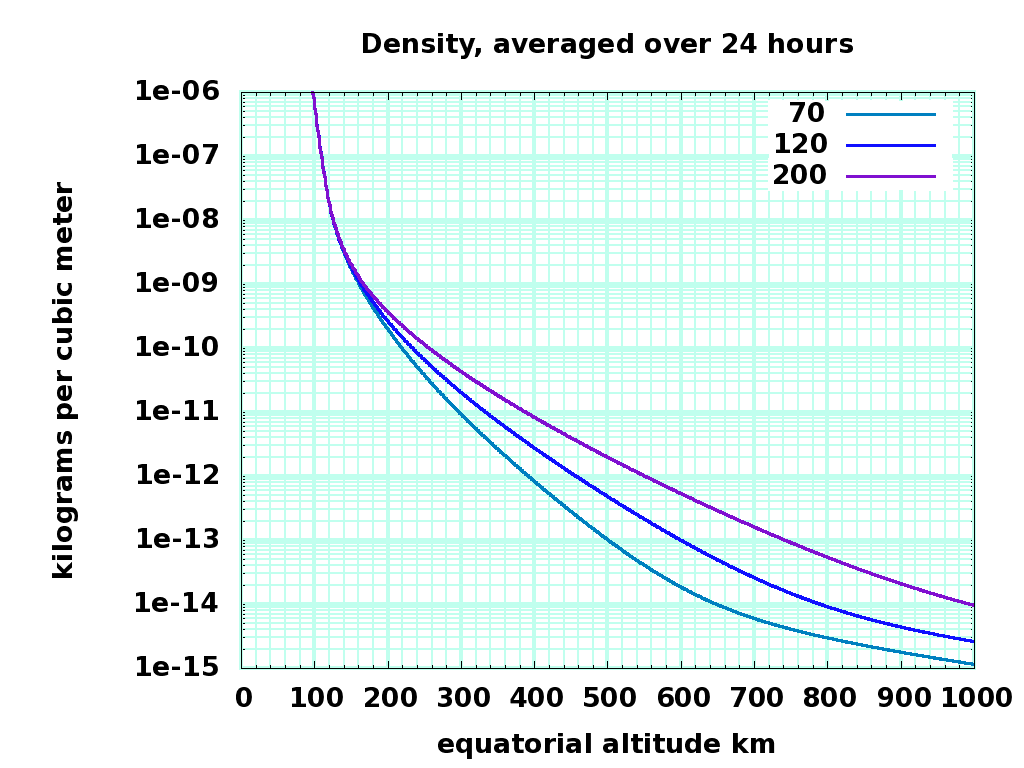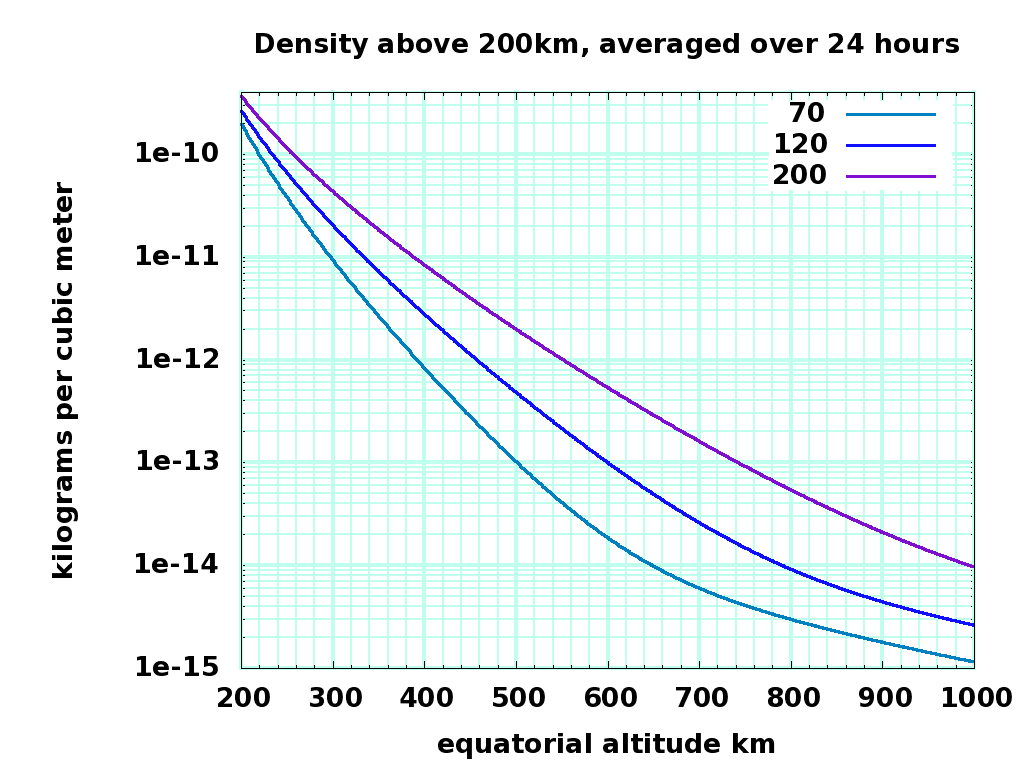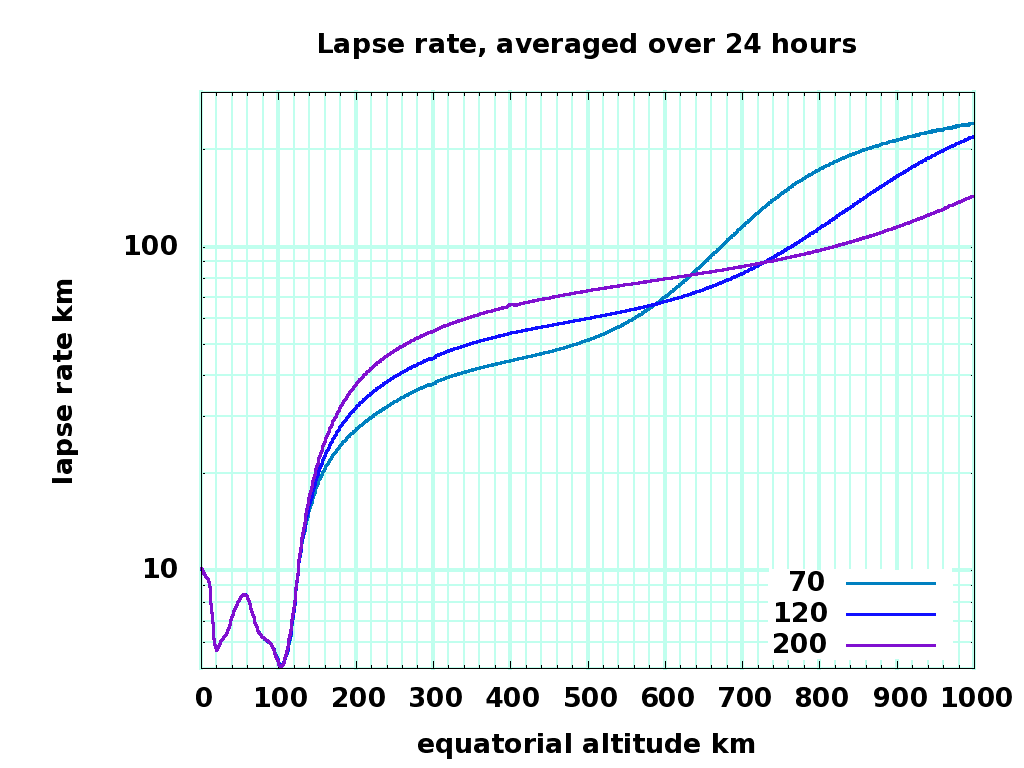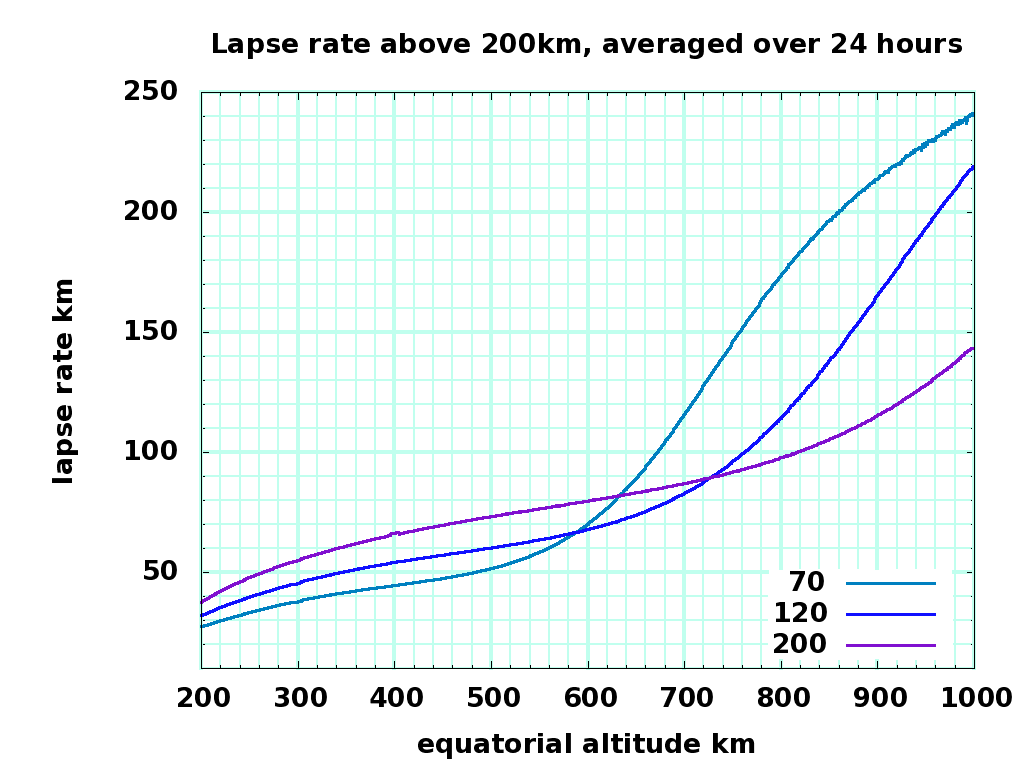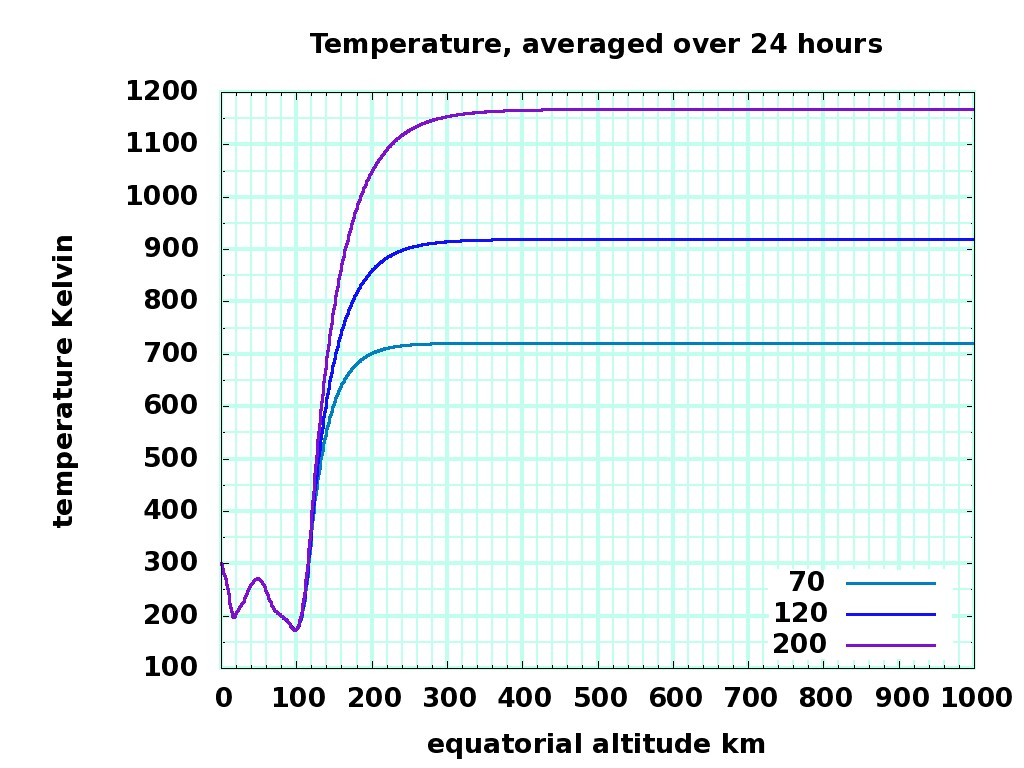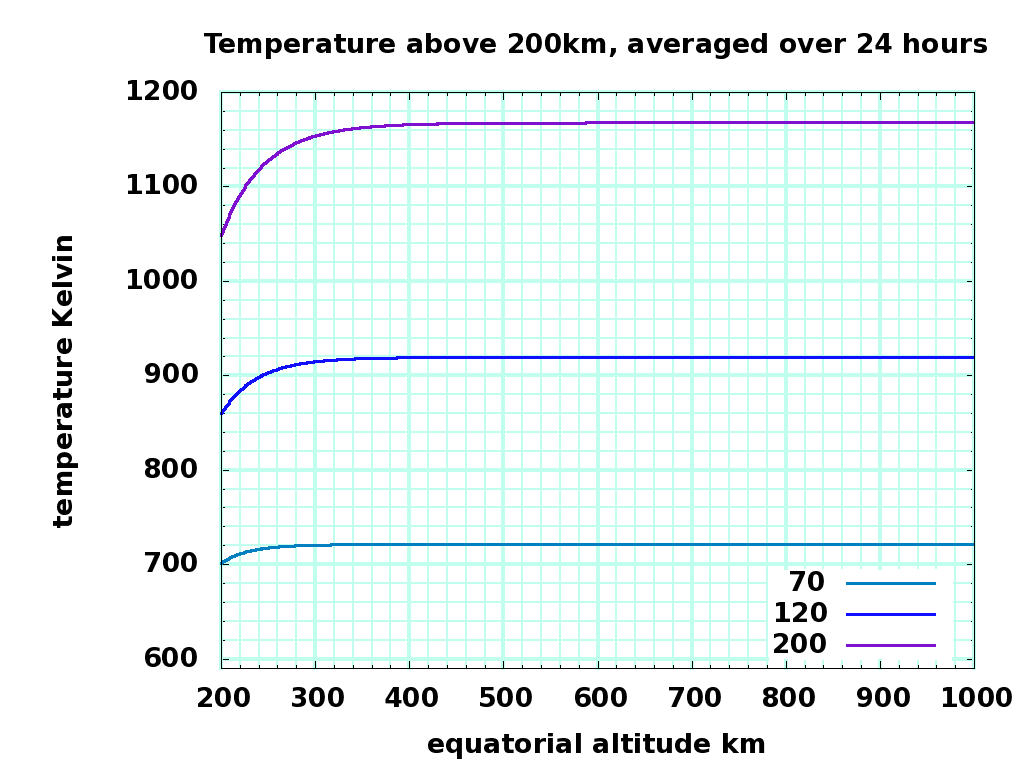|
Size: 4332
Comment:
|
Size: 4336
Comment:
|
| Deletions are marked like this. | Additions are marked like this. |
| Line 28: | Line 28: |
| ||[[attachment:laps0-1K.png|{{attachment:laps0-1K.png|width=448}}]]||[[attachment:laps200-1K.png|{{attachment:laps200-1K.png|width=448}}]]|| | ||[[attachment:lapse0-1K.png|{{attachment:lapse0-1K.png|width=448}}]]||[[attachment:lapse200-1K.png|{{attachment:lapse200-1K.png|width=448}}]]|| |
Exosphere Models
Exosphere
Production server sky orbits will be at 6411 kilometer altitude, or above, far into the exosphere. Such high orbits offer little detectable drag to big iron satellites, so their densities are characterized indirectly and perhaps imprecisely above 1000 km altitudes. Thinsats have much higher "sail" ratios and are more sensitive to density.
There are many high altitude atmospheric models, evolving from Jacchia64. Here is an online model from NASA, based on MSIS-E-90 and valid to 1000 km altitude. The most useful model for our purposes (above 120 km) is the MSIS-86 model. For estimation, we will use MSIS-86 with static density and F10.7 daily solar fluxes of 70 (minimum), 120 (average), and 200 (maximum) x10-22W/m2Hz. In the past, F10.7, has cycled from low to high and back with an 11.5 year period.
The geomagnetic index Kp is a "kinda logarithmic" number ranging from 0 to 9, near zero at quiet times, probably above 10 for a 500 year Carrington Event. Assume ap low/middle/high of 2, 7, 40 (5%, 50%, 95% percentile).
Kp |
0 |
+ |
- |
1 |
+ |
- |
2 |
+ |
- |
3 |
+ |
- |
4 |
+ |
- |
5 |
+ |
- |
6 |
+ |
- |
7 |
+ |
- |
8 |
+ |
- |
9 |
ap |
0 |
2 |
3 |
4 |
5 |
6 |
7 |
9 |
12 |
15 |
18 |
22 |
27 |
32 |
39 |
48 |
56 |
67 |
80 |
94 |
111 |
132 |
154 |
179 |
207 |
236 |
300 |
400 |
Here is a scan of the 1987 A. E. Helin paper that describes the MSIS86 model. Note, the paper specifically notes that it is not subject to copyright, even though Wiley charges $35 for a download.
Using the online model
I used the online model and wget and this calling script to compute the density and temperature models at two hour intervals at the spring solstice, on the equator, for F10.7cm = 70, 120, and 200. Here are the results for altitudes from ground to 999 km altitude:
This file contains the 24 hour average of density, temperature, and approximate lapse rate for the three solar activities. The averages are plotted here:
Not yet
The MSIS-86 C code that I have is a hard-to-read C code translation of the fortran, and looks almost impossible to analytically derive a derivative and code it in. Sigh.
The MSIS-86 static density model uses these double precision variables (with scal added, if I can take a derivative in the code):
inputs |
||
alt |
local geocentric altitude, 90000 to 2000000 meters |
|
sf[1] |
daily solar flux F10.7, Jensen |
|
sf[2] |
averaged daily flux, Jensen same input as sf(1) |
|
sf[3] |
3 hourly planetary geomagnetic index Kp |
|
outputs |
||
tp[1] |
exospheric temperature, Kelvin (INFO ONLY) |
|
tp[2] |
local temperature, Kelvin (IGNORED FOR NOW) |
|
ad[1-6] |
log10 number densities, (IGNORED FOR NOW) |
|
wmol |
mean molecular weight (IGNORED FOR NOW) |
|
dens |
thermospheric density, kg/m3, used for drag model |
msis86_.cpp |
scal |
scale height, meters (ADDED), used for drag model |
|

